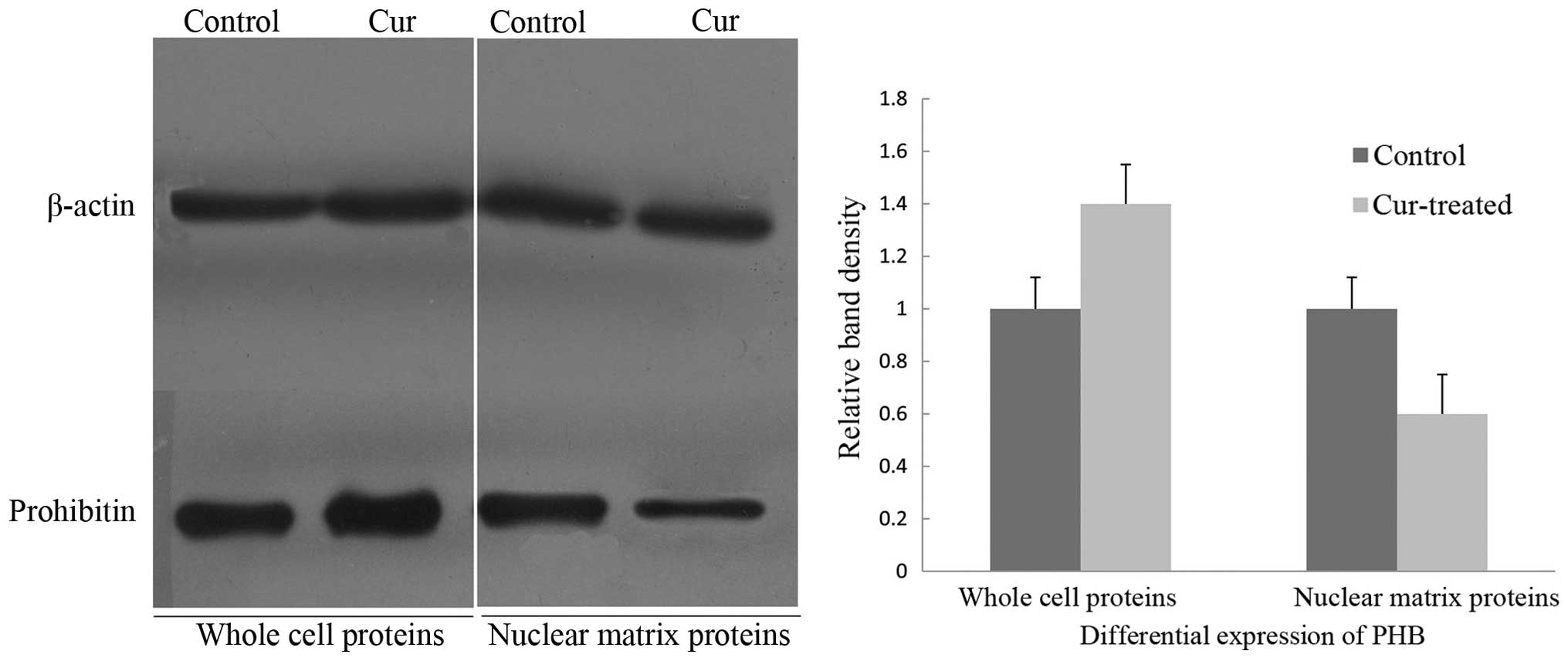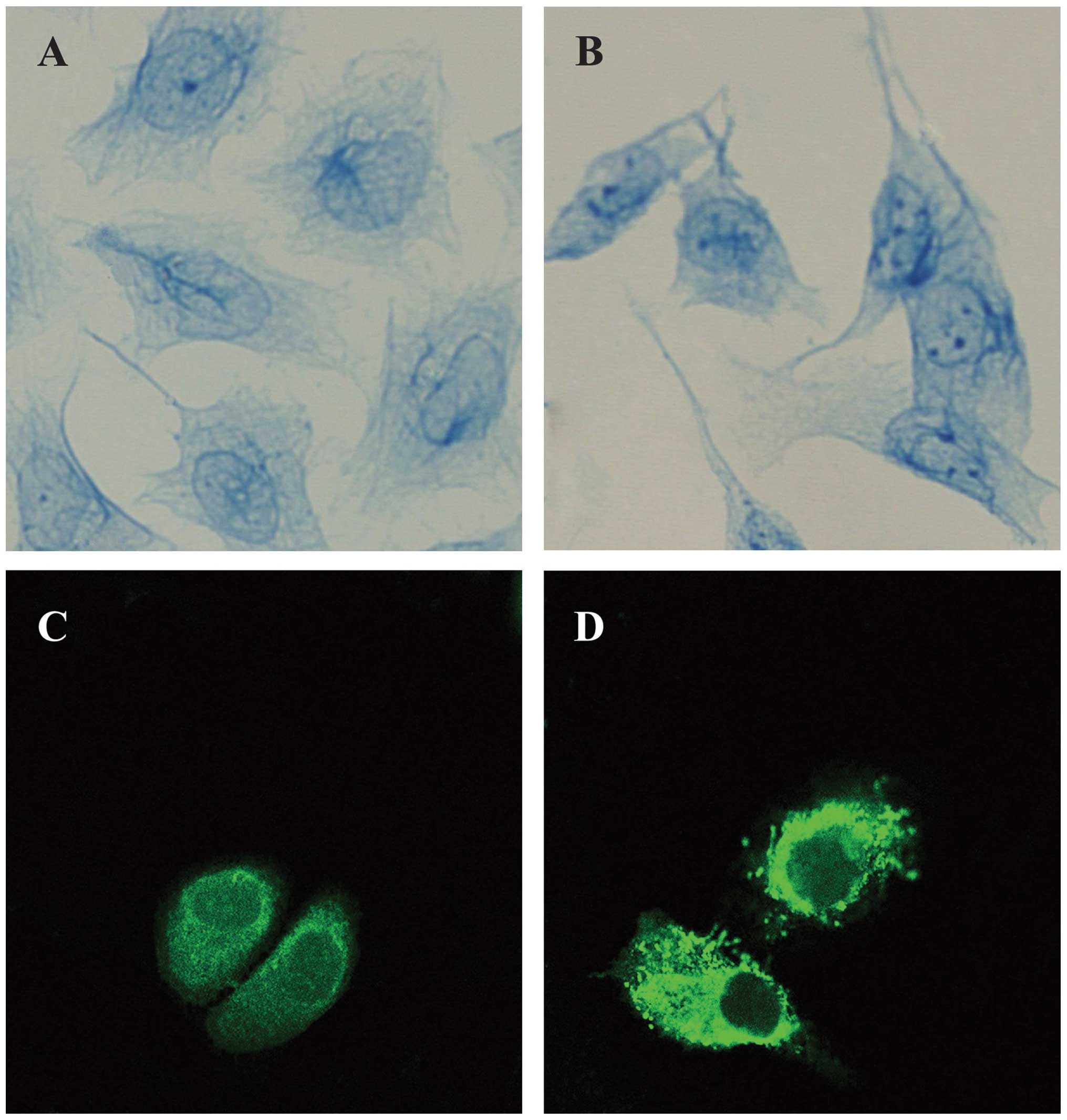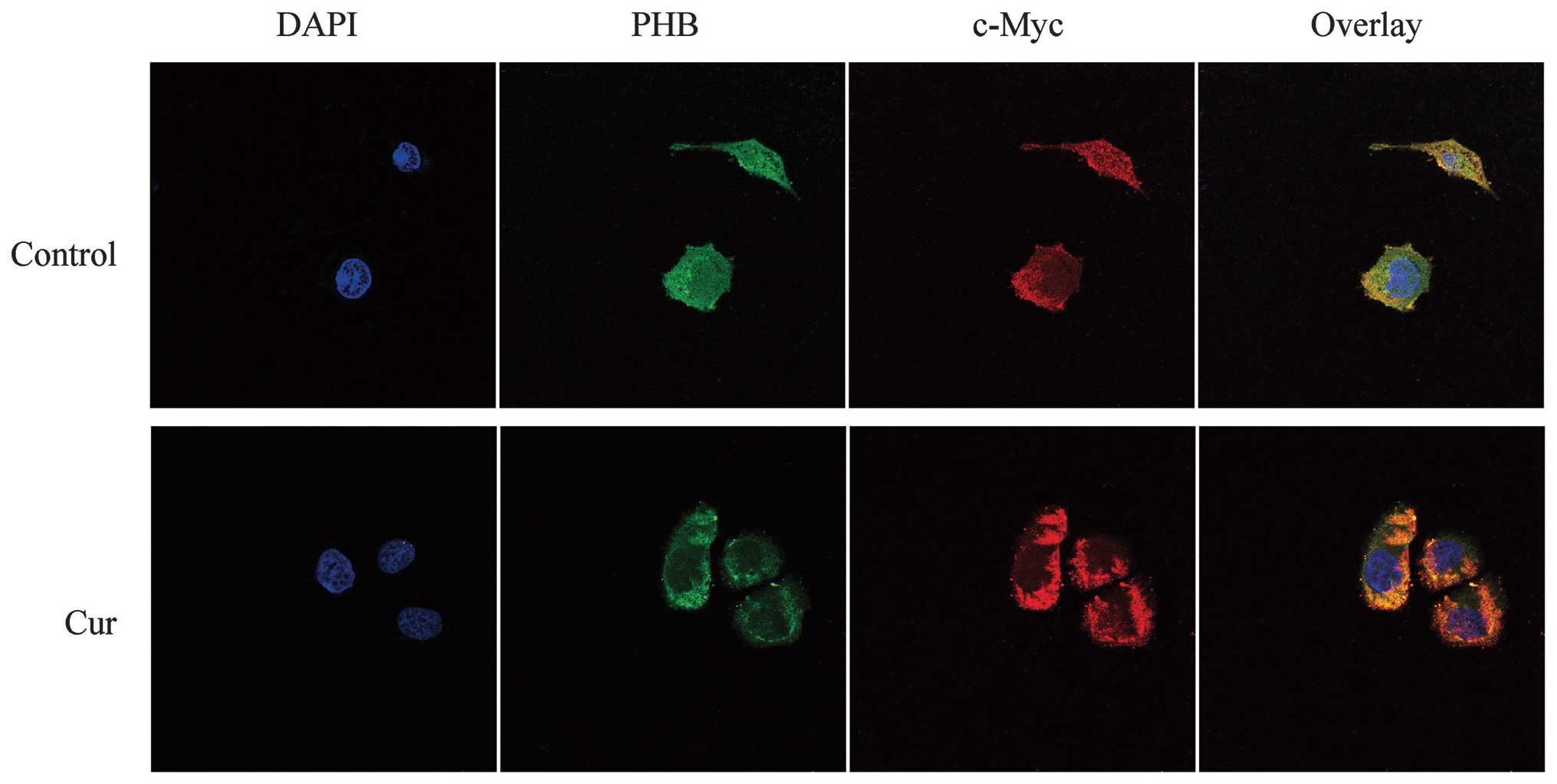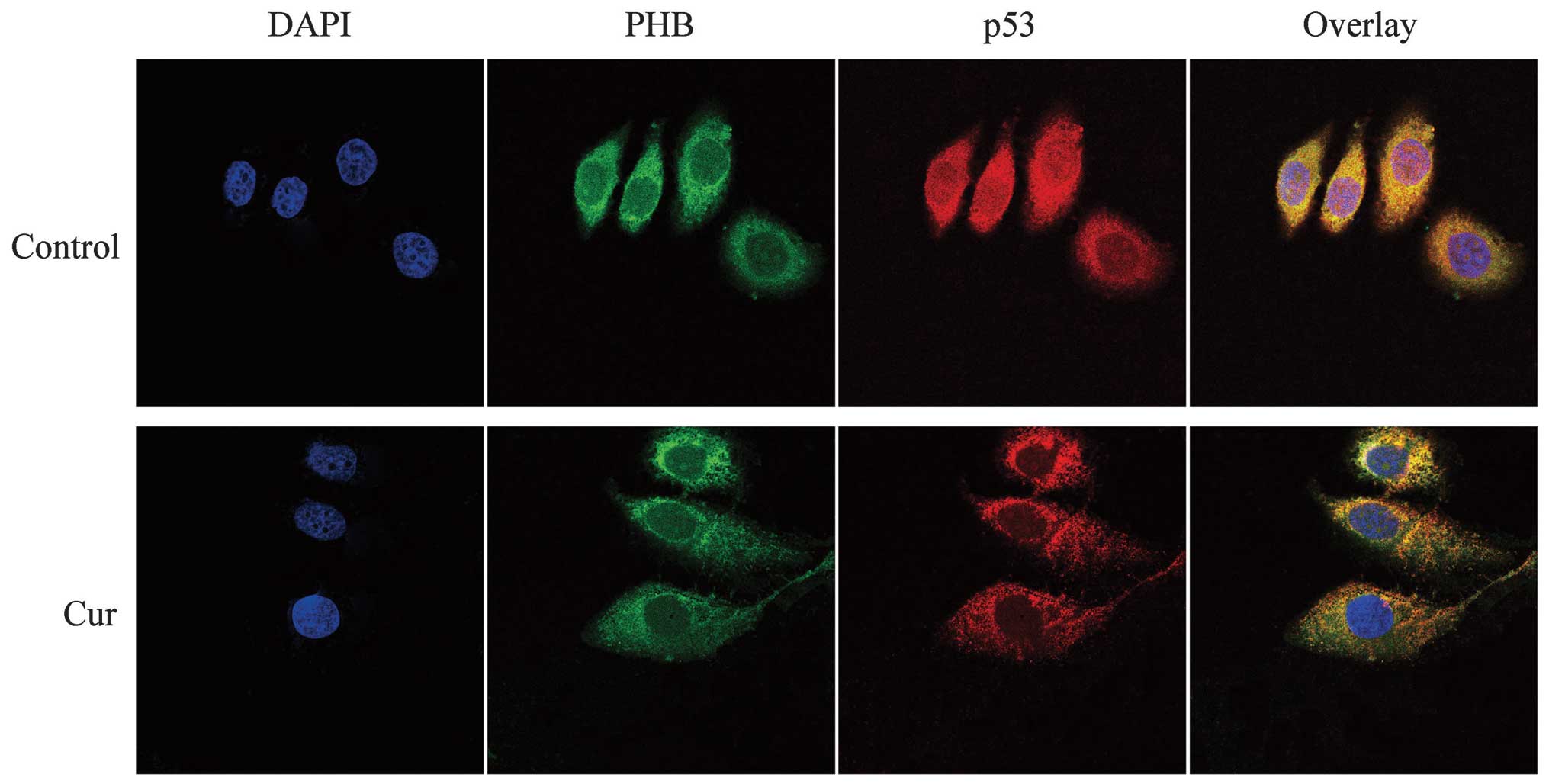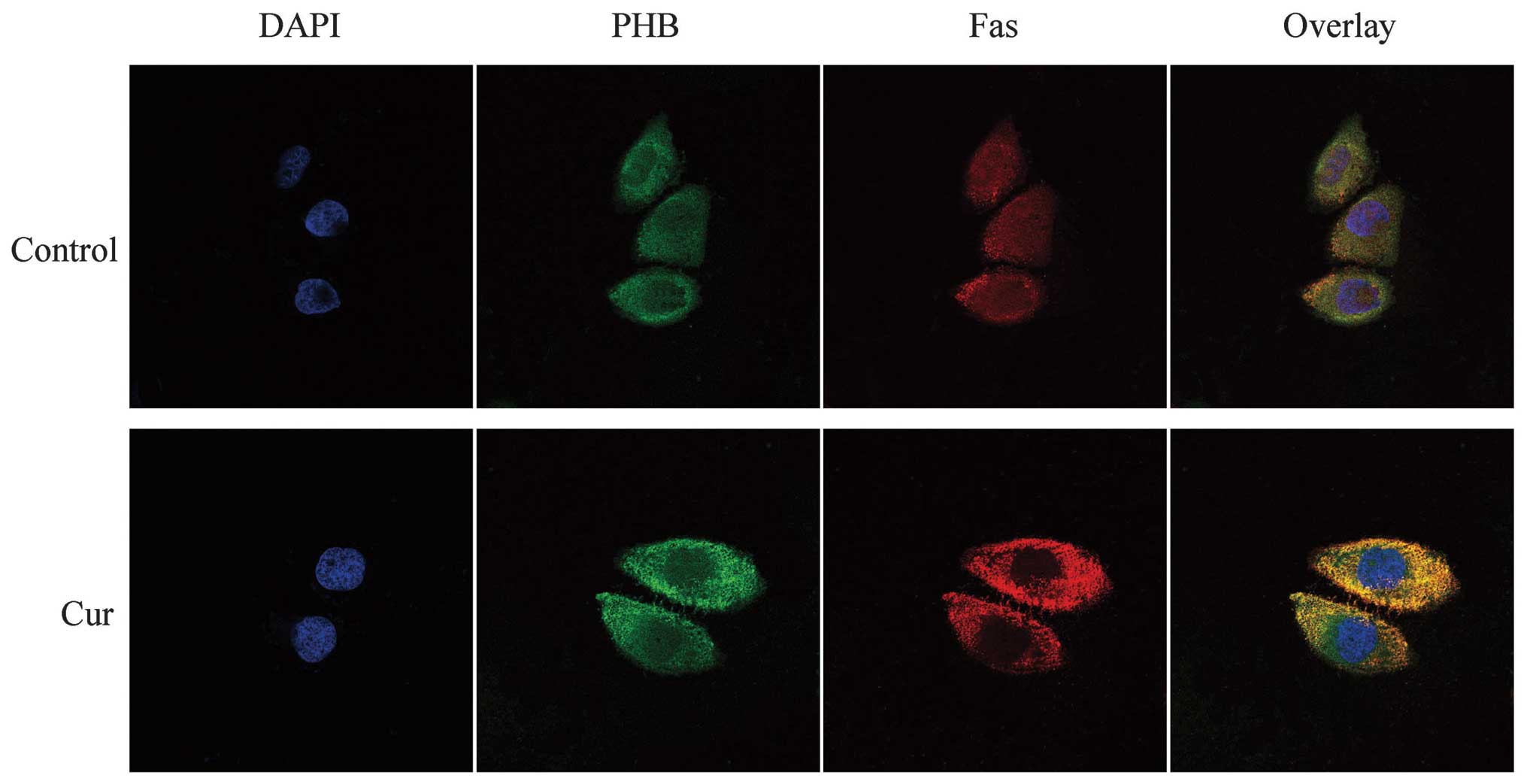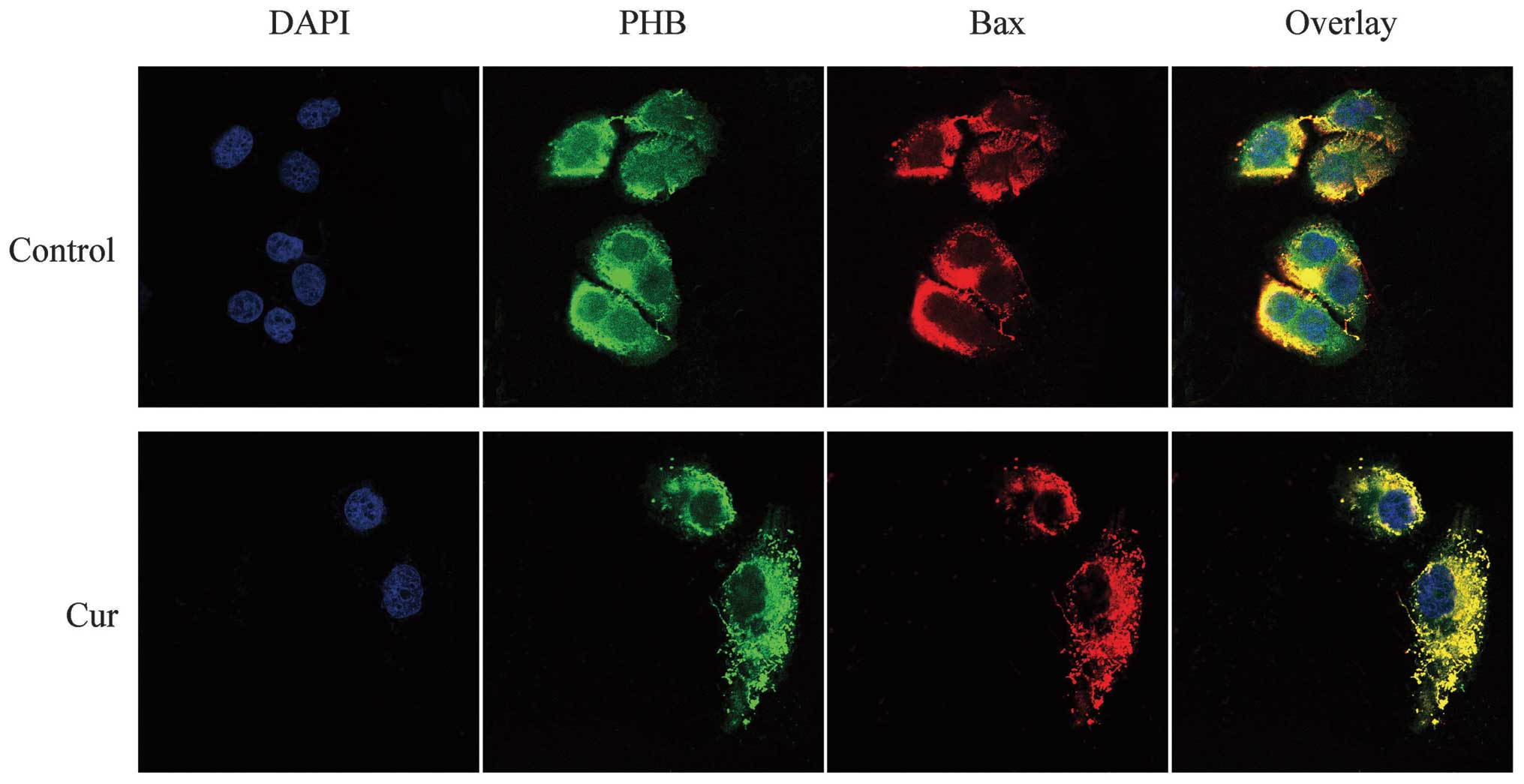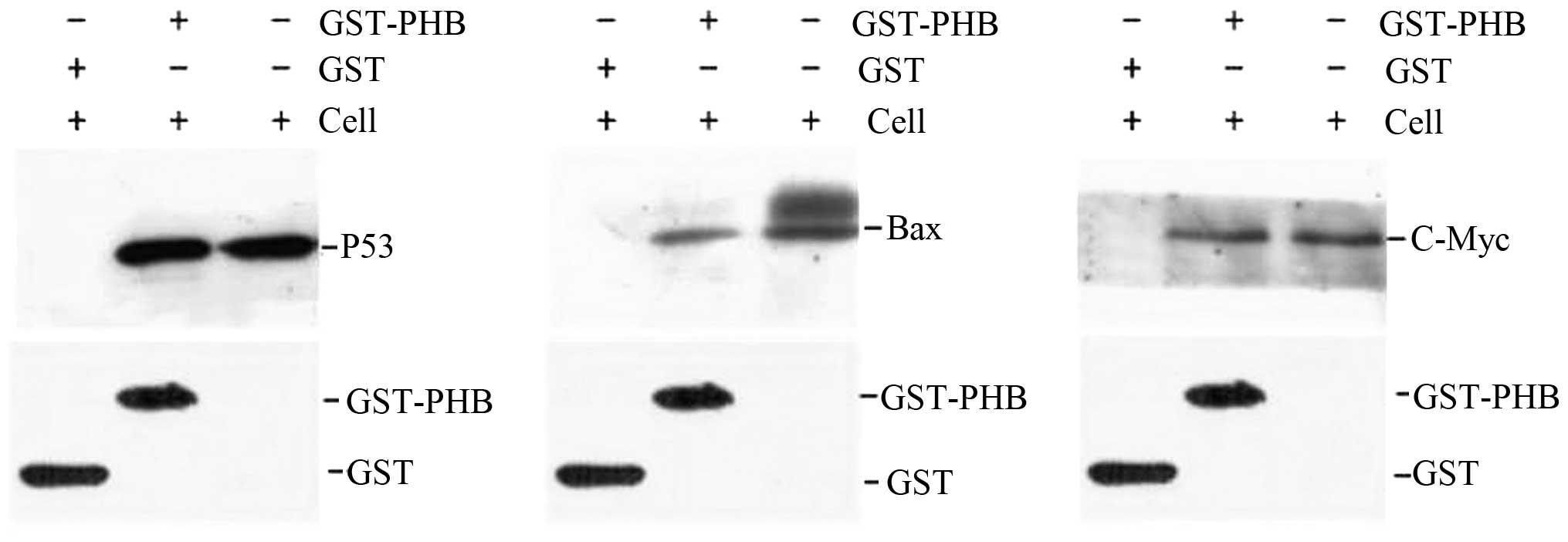|
1
|
Jana NR, Dikshit P, Goswami A and Nukina
N: Inhibition of proteasomal function by curcumin induces apoptosis
through mitochondrial pathway. J Biol Chem. 279:11680–11685. 2004.
View Article : Google Scholar : PubMed/NCBI
|
|
2
|
Boucher BJ: Curcumin and diabetes: a role
for the vitamin D receptor? Br J Nutr. 108:21042012. View Article : Google Scholar : PubMed/NCBI
|
|
3
|
Rodwell C: Curcumin curries favour? Nat
Rev Cancer. 12:3762012. View
Article : Google Scholar
|
|
4
|
Watson JL, Hill R, Yaffe PB, et al:
Curcumin causes superoxide anion production and p53-independent
apoptosis in human colon cancer cells. Cancer Lett. 297:1–8. 2010.
View Article : Google Scholar : PubMed/NCBI
|
|
5
|
Mishra S, Ande SR and Nyomba BL: The role
of prohibitin in cell signaling. FEBS J. 277:3937–3946. 2010.
View Article : Google Scholar : PubMed/NCBI
|
|
6
|
Merkwirth C and Langer T: Prohibitin
function within mitochondria: essential roles for cell
proliferation and cristae morphogenesis. Biochim Biophys Acta.
1793:27–32. 2009. View Article : Google Scholar : PubMed/NCBI
|
|
7
|
Zhou P, Qian L, D’Aurelio M, et al:
Prohibitin reduces mitochondrial free radical production and
protects brain cells from different injury modalities. J Neurosci.
32:583–592. 2012. View Article : Google Scholar : PubMed/NCBI
|
|
8
|
Gamble SC, Odontiadis M, Waxman J, et al:
Androgens target prohibitin to regulate proliferation of prostate
cancer cells. Oncogene. 23:2996–3004. 2004. View Article : Google Scholar : PubMed/NCBI
|
|
9
|
Jupe ER, Badgett AA, Neas BR, et al:
Single nucleotide polymorphism in prohibitin 3′ untranslated region
and breast-cancer susceptibility. Lancet. 357:1588–1589. 2001.
|
|
10
|
Fusaro G, Dasgupta P, Rastogi S, Joshi B
and Chellappan S: Prohibitin induces the transcriptional activity
of p53 and is exported from the nucleus upon apoptotic signaling. J
Biol Chem. 278:47853–47861. 2003. View Article : Google Scholar : PubMed/NCBI
|
|
11
|
Zhu B, Zhai J, Zhu H and Kyprianou N:
Prohibitin regulates TGF-beta induced apoptosis as a downstream
effector of smad-dependent and -independent signaling. Prostate.
70:17–26. 2010. View Article : Google Scholar : PubMed/NCBI
|
|
12
|
Wong PF, Cheong WF, Shu MH, Teh CH, Chan
KL and AbuBakar S: Eurycomanone suppresses expression of lung
cancer cell tumor markers, prohibitin, annexin 1 and endoplasmic
reticulum protein 28. Phytomedicine. 19:138–144. 2012. View Article : Google Scholar : PubMed/NCBI
|
|
13
|
Li QF: Effect of retinoic acid on the
changes of nuclear matrix in termediate filament system in gastric
carcinoma cells. World J Gastroenterol. 5:417–420. 1999.PubMed/NCBI
|
|
14
|
Sheffield JB: ImageJ, a useful tool for
biological image processing and analysis. Microsc Microanal.
13:200–201. 2007. View Article : Google Scholar
|
|
15
|
Kang X, Zhang L, Sun J, et al: Prohibitin:
a potential biomarker for tissue-based detection of gastric cancer.
J Gastroenterol. 43:618–625. 2008. View Article : Google Scholar : PubMed/NCBI
|
|
16
|
Shi SL, Li QF, Liu QR, et al: Nuclear
matrix protein, prohibitin, was down-regulated and translocated
from nucleus to cytoplasm during the differentiation of
osteosarcoma MG-63 cells induced by ginsenoside Rg1, cinnamic acid,
and tanshinone IIA (RCT). J Cell Biochem. 108:926–934. 2009.
View Article : Google Scholar : PubMed/NCBI
|
|
17
|
Nuell MJ, Stewart DA, Walker L, et al:
Prohibitin, an evolutionarily conserved intracellular protein that
blocks DNA synthesis in normal fibroblasts and HeLa cells. Mol Cell
Biol. 11:1372–1381. 1991.PubMed/NCBI
|
|
18
|
McClung JK, Jupe ER, Liu XT and Dell’Orco
RT: Prohibitin: potential role in senescence, development, and
tumor suppression. Exp Gerontol. 30:99–124. 1995. View Article : Google Scholar : PubMed/NCBI
|
|
19
|
Yu J and Zhang L: The transcriptional
targets of p53 in apoptosis control. Biochem Biophys Res Commun.
331:851–858. 2005. View Article : Google Scholar : PubMed/NCBI
|
|
20
|
Ninomiya I, Yonemura Y, Matsumoto H, et
al: Expression of c-myc gene product in gastric carcinoma.
Oncology. 48:149–153. 1991. View Article : Google Scholar : PubMed/NCBI
|
|
21
|
Cao X, Bennett RL and May WS: c-Myc and
caspase-2 are involved in activating Bax during cytotoxic
drug-induced apoptosis. J Biol Chem. 283:14490–14496. 2008.
View Article : Google Scholar : PubMed/NCBI
|
|
22
|
Li X, Ye H, Cai L, et al: Millimeter wave
radiation induces apoptosis via affecting the ratio of Bax/Bcl-2 in
SW1353 human chondrosarcoma cells. Oncol Rep. 27:664–672.
2012.PubMed/NCBI
|
|
23
|
Yang D, Liu X, Zhang R, et al: Increased
apoptosis and different regulation of pro-apoptosis protein bax and
anti-apoptosis protein bcl-2 in the olfactory bulb of a rat model
of depression. Neurosci Lett. 504:18–22. 2011. View Article : Google Scholar : PubMed/NCBI
|
|
24
|
Xu B, Xu Z, Xia T, et al: Effects of the
Fas/Fas-L pathway on fluoride-induced apoptosis in SH-SY5Y cells.
Environ Toxicol. 26:86–92. 2011. View Article : Google Scholar : PubMed/NCBI
|
|
25
|
Wang XY, Zhang R and Lian S: Aberrant
expression of Fas and FasL pro-apoptotic proteins in basal cell and
squamous cell carcinomas. Clin Exp Dermatol. 36:69–76. 2011.
View Article : Google Scholar : PubMed/NCBI
|



